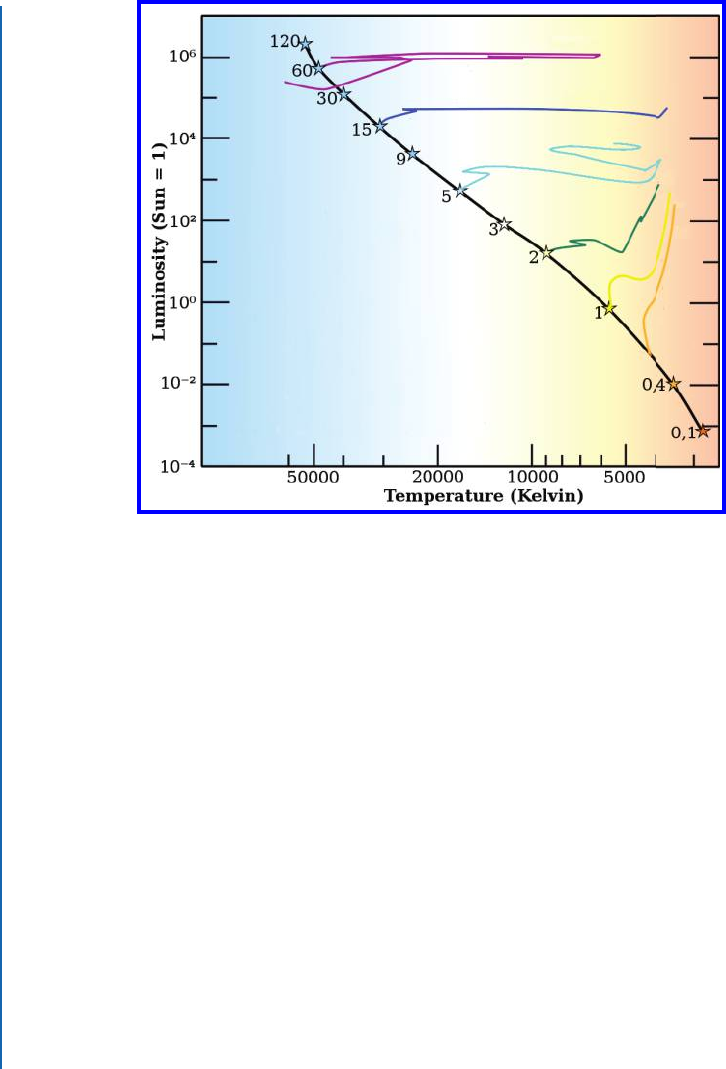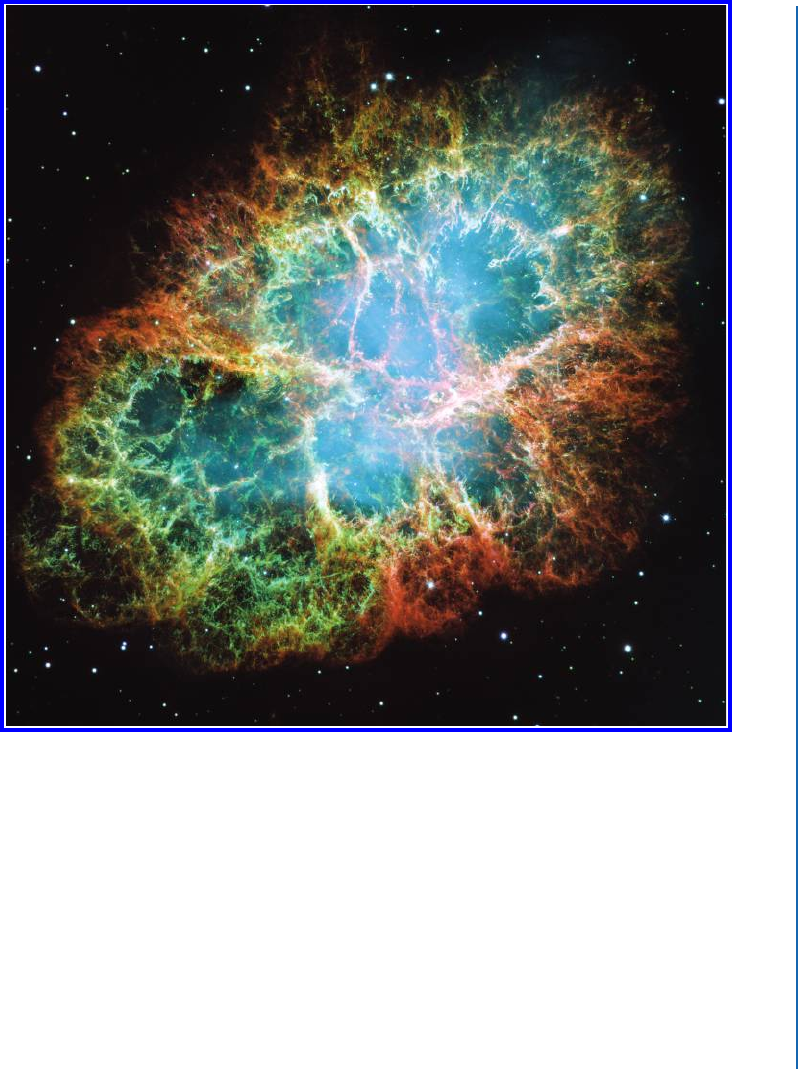
132 9. STELLAR EVOLUTION
Figure 9.8: Evolutionary tracks for many different masses of stars. ey all start at the zero-age
main sequence (ZAMS), changing slowly and very little while on the main sequence. en most
undergo rapid changes to become red giants or supergiants. e very lowest mass stars do not
become giants. (Graphic credit: Lithopsian, CC BY-SA 3.0.)
e glowing gas in this nebula is illuminated by shock waves, produced by fast-moving
gas—just as one would expect for such a supernova remnant. e speed of the gas can be mea-
sured with the Doppler effect. A spectrum of the gas shows spectral features, and some are both
redshifted and blueshifted. is means some of the gas is moving toward us, while other parts
of the nebula are moving away from us. is is just as one would expect for a rapidly expanding
shell of gas. Furthermore, photographs taken decades apart show the nebula literally getting
larger. Extrapolating this expansion backward in time agrees with the date of 1054 AD for the
explosion.
Most type II supernovae are discovered not in the Milky Way, but rather in other spiral (or
irregular) galaxies. From literally one night to the next, a new star—comparable in brightness
to the entire galaxy—appears in the galaxy’s disk. Over many months, it fades away. Spectral
analysis clearly shows high-velocity gas.

9.9. STAR CLUSTERS AND ISOCHRONES 133
Figure 9.9: e Crab Nebula, what is left over from a supernova explosion in 1054. A neu-
tron star lies at its center. (Image credit: NASA, ESA, J. Hester and A. Loll (Arizona State
University), Public Domain.)
9.9 STAR CLUSTERS AND ISOCHRONES
By studying many individual stars, we can look for particular stages in the evolution of stars
of different masses. We can then compare these observations to our theoretical predictions,
illustrated for example by the evolutionary tracks of Figure 9.5. e results agree favorably.
But these are only snapshots in the lives of random stars, all of different ages and masses.
It is difficult to untangle from these disconnected observations what stage in its life a particular
star occupies. Differences in the abundance of “metals” adds to this complexity. Fortunately,
..................Content has been hidden....................
You can't read the all page of ebook, please click here login for view all page.
